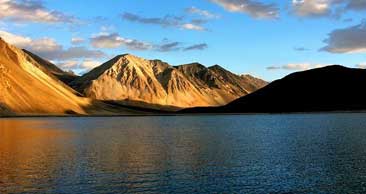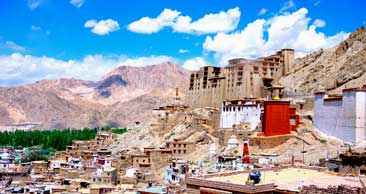

Situated at an altitude of 2,700 kms, Kargil lies midway between Srinagar and Leh. It is the second largest urban centre of Ladakh. Once an important trading centre in the trade route from Kashmir to Baltistan, Afghanistan, Central Asia and Tibet, it is now more of a transit point between Leh and Srinagar or Zanskar. Even 20 years ago, yak trains made their way into Kargil bazaar from Padum.
The region is politically part of India, and ethnically part of Baltistan, now in Pakistan. The majority of Kargil’s population is Shi’ite muslim of Balti origin which is evident from the number of mosques and Urdu signages. The Kargil muslims adhere to strict Islamic traditions, and one can hardly see women on the streets. Liquor is strictly prohibited. There is a Jama Masjid, and two Imambaras (mourning houses). This is the only majority muslim district in Ladakh.
Kargil is watered by two the tributaries of the Suru River, Drass and Wakha, and reaps rich productions of barley, wheat, vegetable and fruit, are. Kargil is famous for its apricots.
Kargil has a more mixed ethnic population, therefore, there are more regional dialects spoken here as compared to Leh.
Nestled in the Himalayas, the tempoerature is cool. Summers are warm with cool nights and winter temperatures drop to as low as -40C.
The nearest airports are Srinagar (204kms), and Leh (234 kms), and the nearest railhead is Jammu.
Situated along either banks of the Wakha River, 45 kms east of Kargil, Mulbek is inhabited by Buddhists, and is well known for its many monuments of the early Budhist era. It is the last Buddhist post as it were, as it marks the dividing line between the Muslim belt of Kargil and the Buddhist part of Ladakh.
Mulbek ChambaMulbek Chamba is an impressive 9 m high statue of Maitreya, the Future Buddha, cut into the rock face dating back to 700 AD. It is right on the main road and is a blend of Shaivite symbolism with early Buddhist art.
Mulbek GompaPerched atop a rocky cliff, Mulbek Gompa (monastery) belongs to the Gelukpa order. Getting there involves a laborious walk, so very. It offers a great view of Wakha valley and served as an outpost to guard the caravan route in the days of the silk route. Like all Buddhists monasteries it is adorned with frescoes and statues.
ShergolLocated between Kargil and Mulbekh, the picturesque village of Shergol is on a slight climb above the Wakha River, right of the Kargil-Leh road. The main attraction is a cave monastery, which belongs to the Gelukpa order. It houses only two monks and has little to offer in terms of frescoes except for one of the eleven-headed Avalokiteswara. Below this small monastery is a larger Buddhist nunnery with about a dozen nuns.
The village is accessible by the motorable road that branches off from the Kargil-Leh road, about 5 km short of Mulbek. Shergol is a convenient base for exciting treks across the mountains into the Suru valley. It is also the approach base for visiting Urgyan-Dzong, a meditation retreat that lies deep within the mountains surrounding the Wakha River valley.

Best of Leh - Kashmir
Duration : 17 N / 18 D
Routing : Srinagar - Gulmarg - Pahalgam - Sonmarg

Best of Leh - Manali
Duration : 18 N / 19 D
Routing : Amritsar - Dharamshala - Manali - Sarchu

Glimpses of Leh - Ladakh
Duration : 9 N / 10 D
Routing : Leh - Lamayuru - Alchi – Likir

High Altitude Lake Tour
Duration : 9 N / 10 D
Routing : Leh - Uleytokpo - Pangong Lake

Kerala with Ladakh
Duration : 20 N / 21 D
Routing : Cochin - Munnar - Periyar - Kumarakom

Ladakh Cultural Tour
Duration : 8 N / 9 D
Routing : Leh Monasteries - Lamayuru - Alchi

Ladakh with Golden Triangle
Duration : 17 N / 18 D
Routing : Delhi - Jaipur - Agra - Delhi – Leh - Lamayuru

Ladakh - Kashmir Tour
Duration : 11 N / 12 D
Routing : Delhi - Leh - Pangong Lake - Leh - Alchi

Ladakh with Classical India
Duration : 21 N / 22 D
Routing : Delhi - Jaipur - Agra - Jhansi - Khajuraho

Ladakh with Taj
Duration : 16 N / 17 D
Routing : Delhi - Agra - Leh Monasteries - Lamayuru